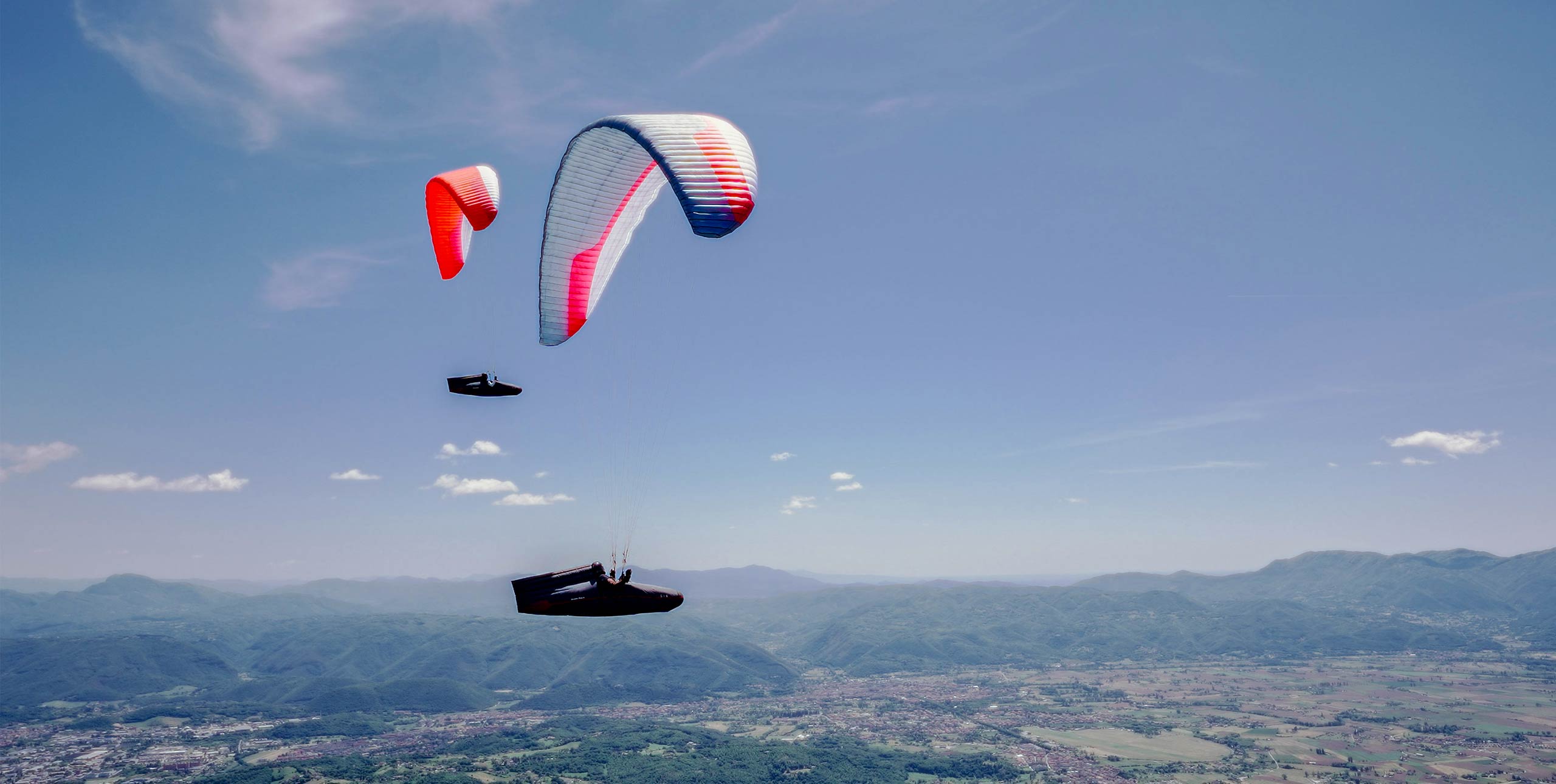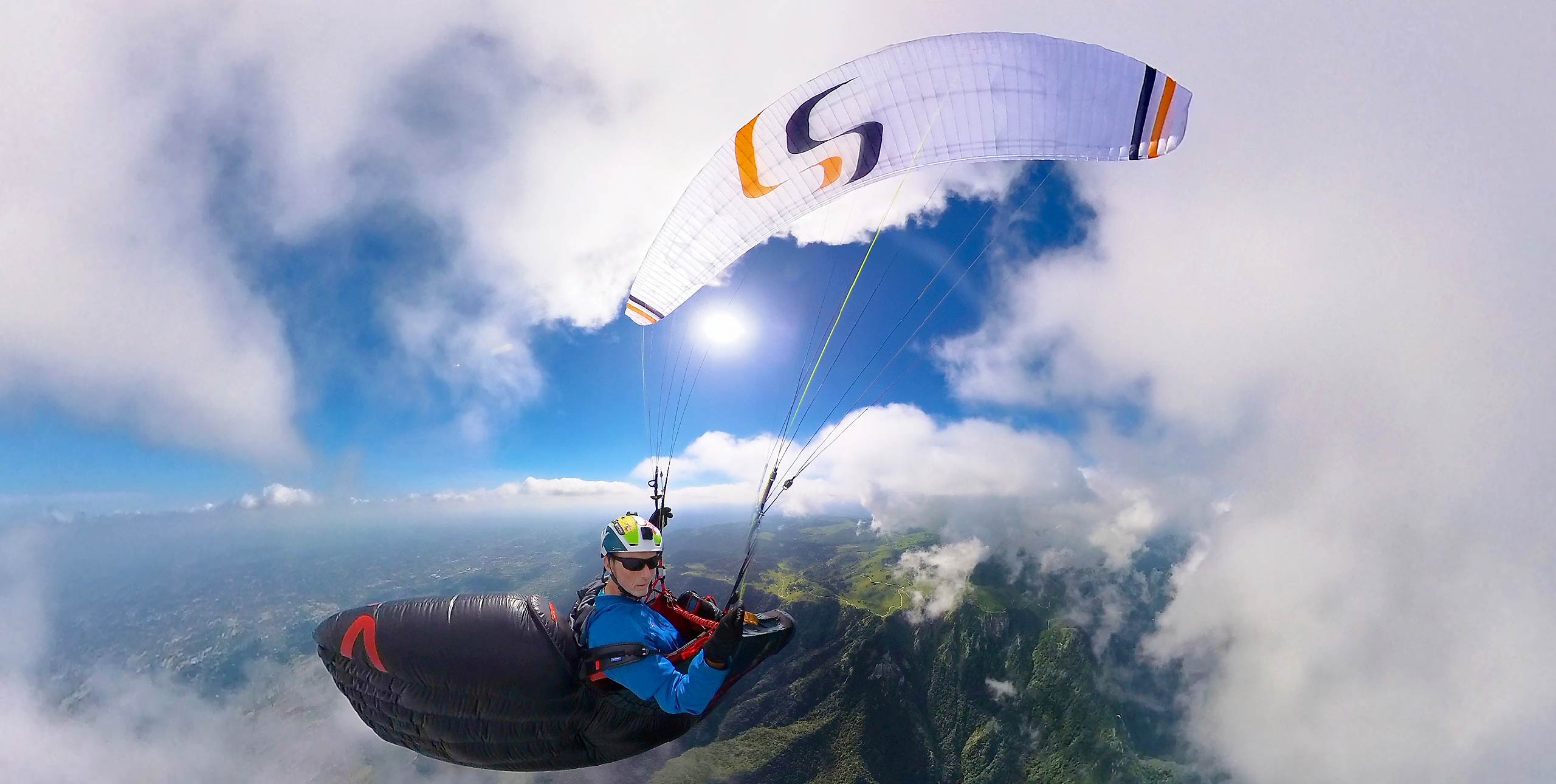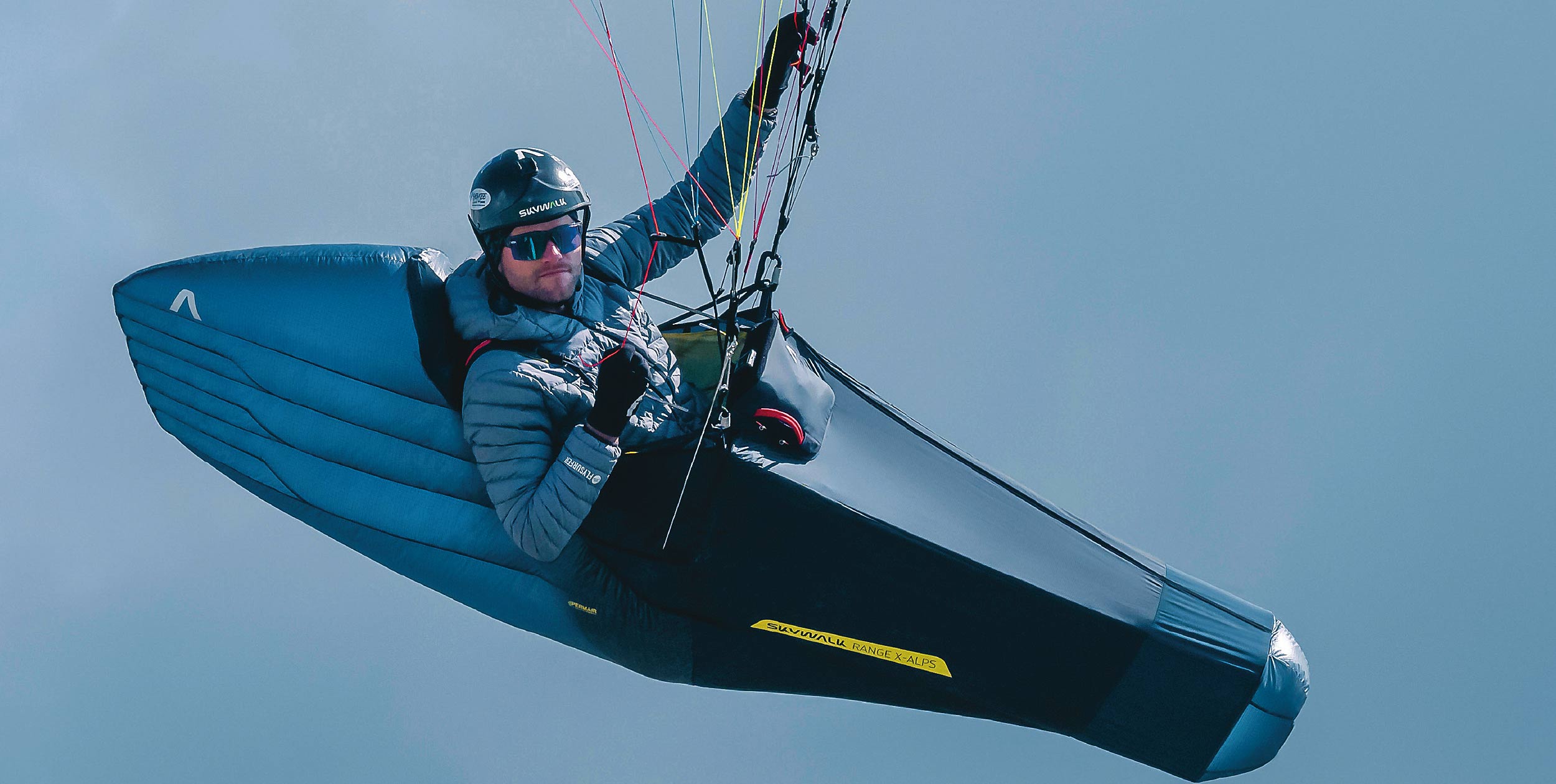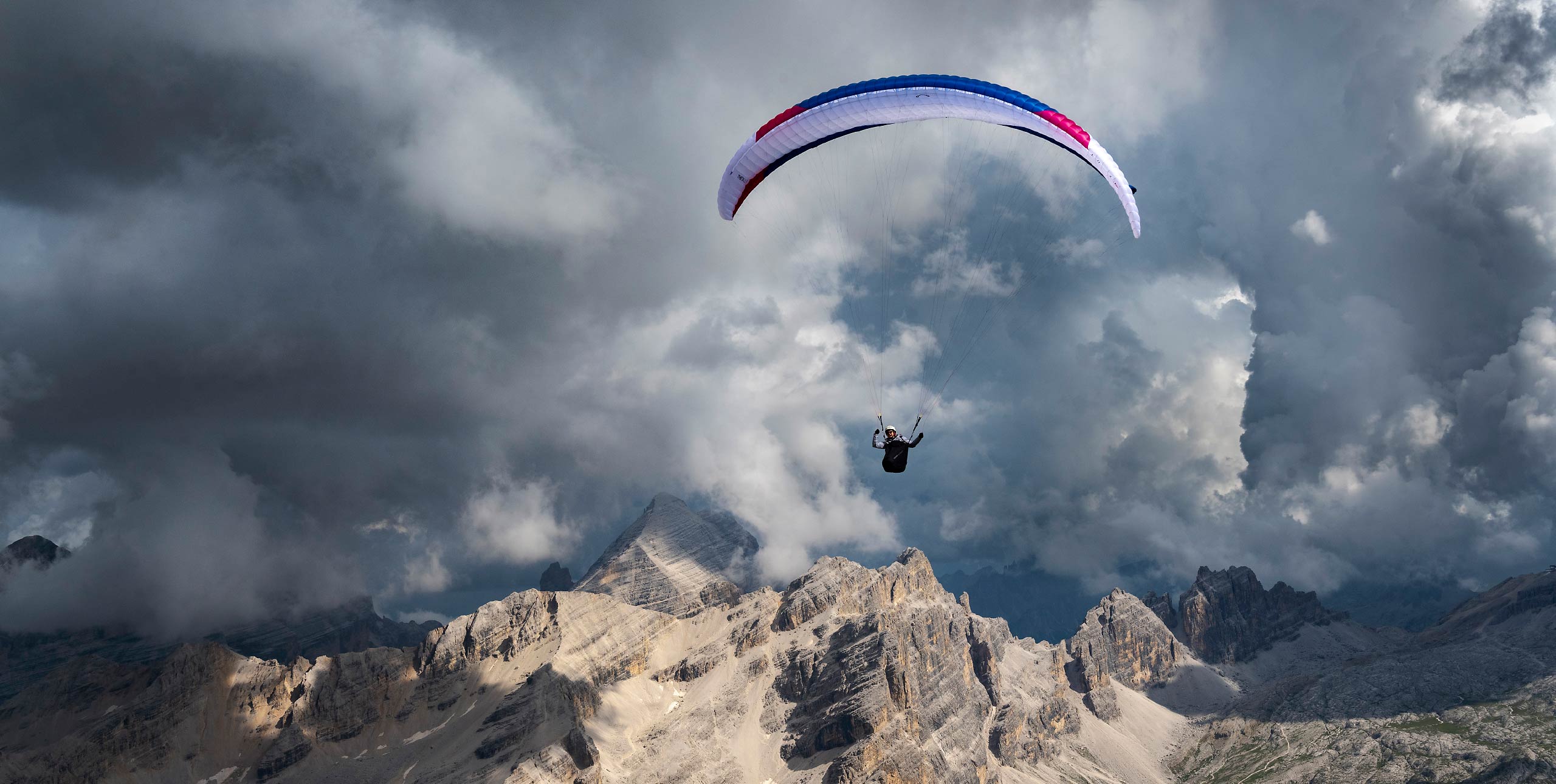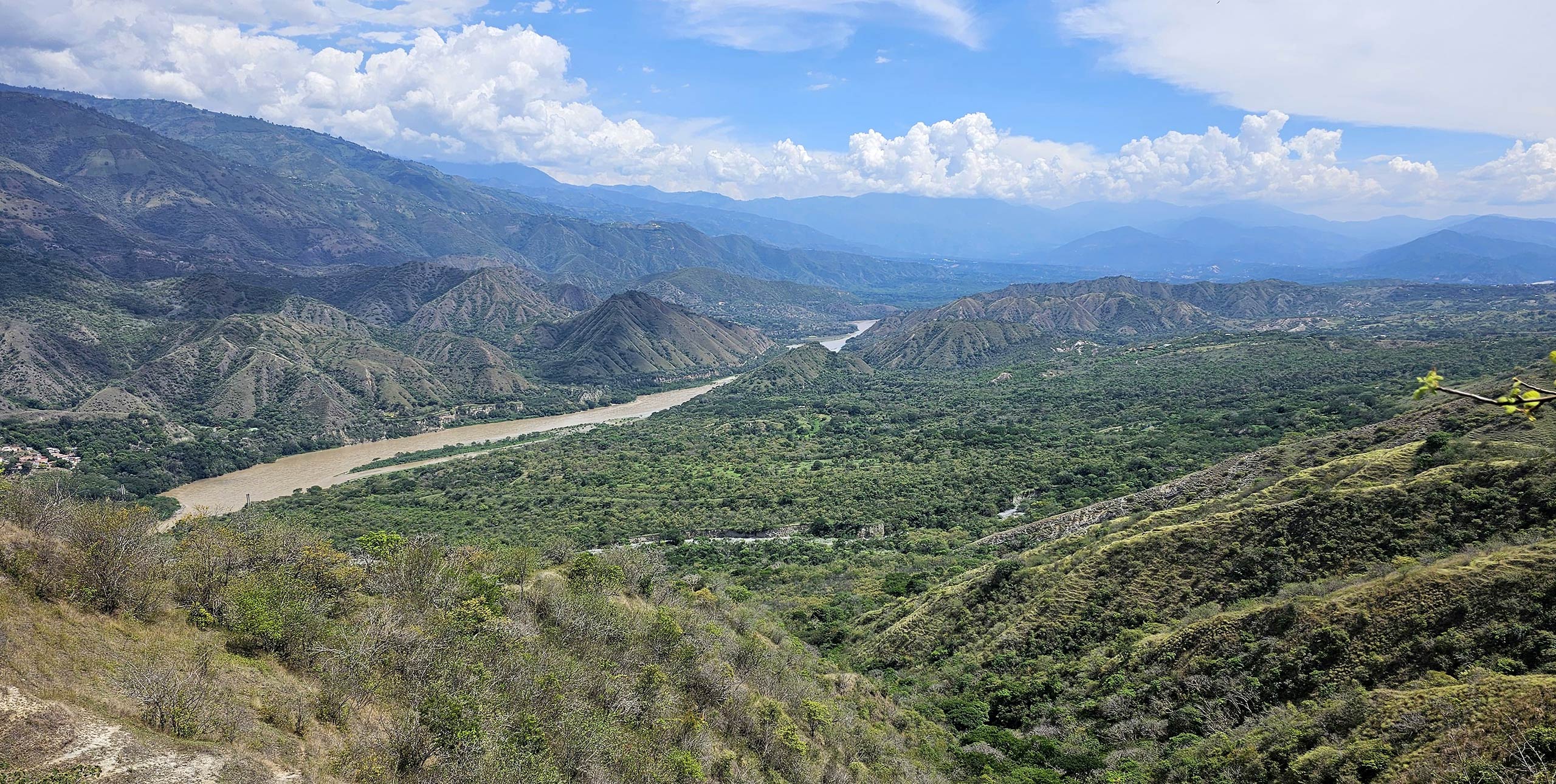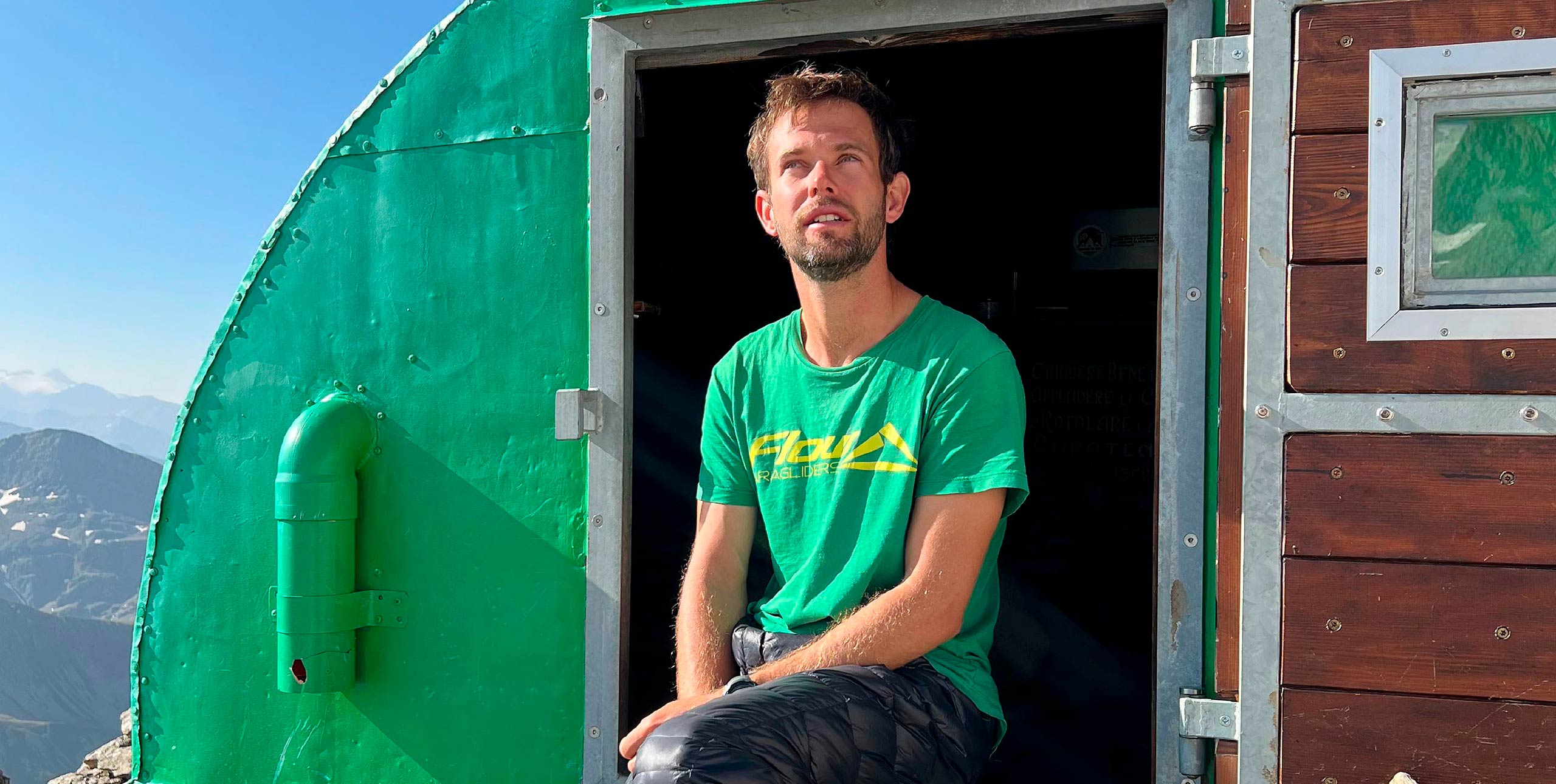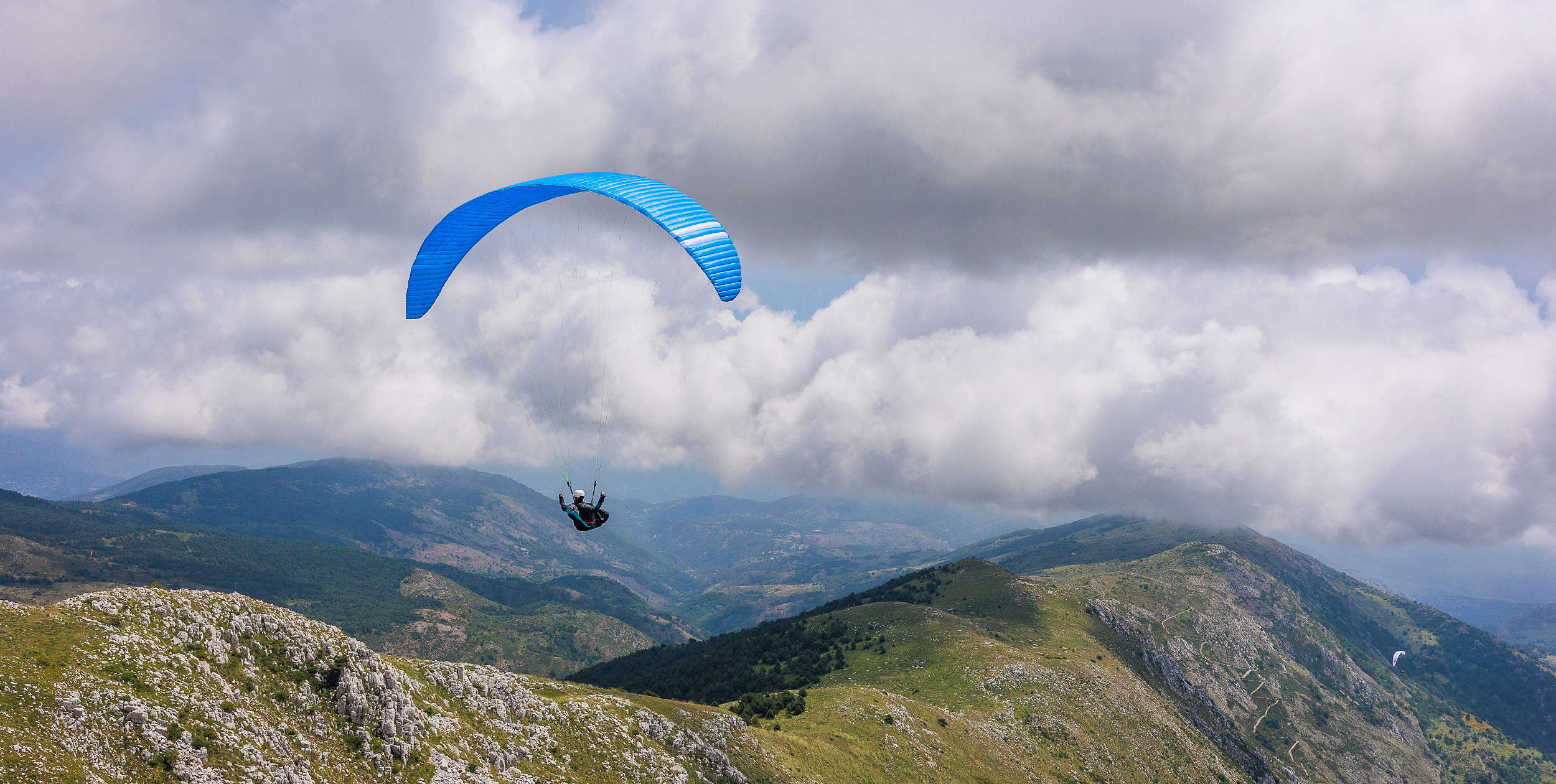
The Q-Light 3 from Triple Seven is a first-class speed machine, says Brian Steele. But can it stand up to the two-line EN-C revolution?
The Queen 3 and this lighter version, the Q-Light 3, are targeted firmly at EN-C category pilots who want many of the benefits of a two-liner while sticking with a three-riser layout. The glider sits below the King 2 (EN D) and the Gambit (CCC) in the range.
Compared with the Queen 2 there has been a slight reduction in the wing’s aspect ratio, from 6.3 to 6.2, but it is still a performance-oriented profile that made me immediately think “high C” rather than “mid”. The wing has been certified without collapse lines and designed to have “classic C” recovery characteristics in terms of handling and passive safety.
My main wing is an Advance Sigma 11 (EN C) and compared to that the Q-Light 3 looked more intimidating, at least on first impressions and reading the basic stats.
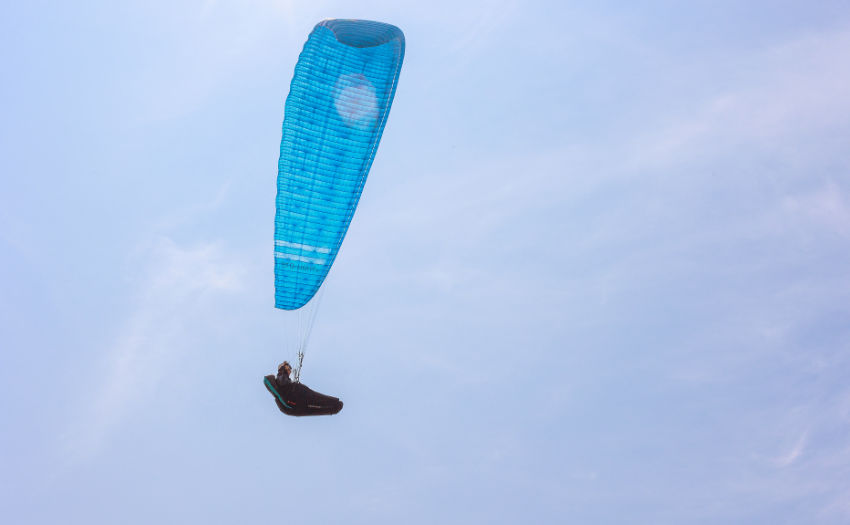
Design and materials
Unrolling the wing I didn’t think it felt particularly light. In the small size I flew however the wing weighs only 3.7kg for the 23m² versus 4.9kg for the standard Queen 3.
The areas where the wing is subject to most abuse and UV such as the leading edge are made with standard 38g/m² Porcher fabric, whereas the bottom, top-surface and profiles have lighter, double-coated 27g/m² and 27g/m² hard finish material.
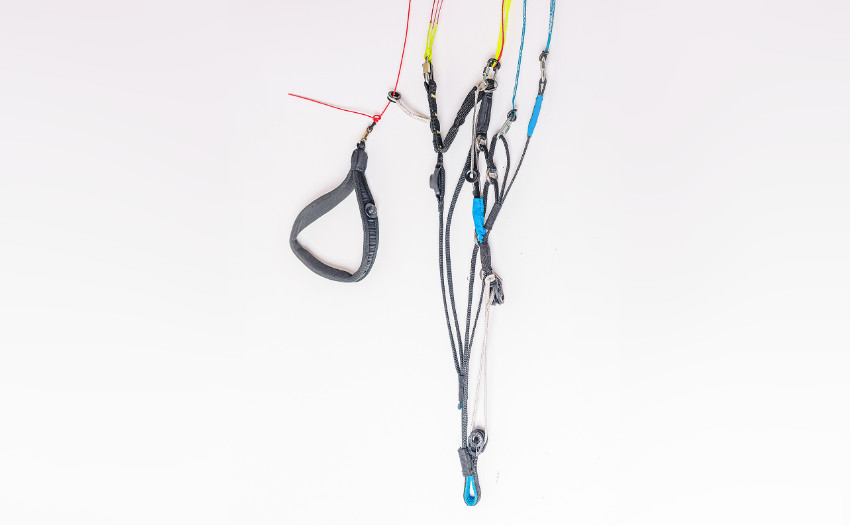
Triple Seven have designed 7mm Kevlar-reinforced risers which look and feel a lot more like traditional nylon risers but still represent a significant weight saving over standard risers. This design path was influenced by knowing that pilots often swap out their light risers for standard ones, simply to increase ease of use.
The line-set is designed with longevity in mind and allows for retrimming throughout the glider’s lifespan. A-B are PPSLS Liros and the rear lines are coated Edelrid A-8000-U.
The internal structures of high-end C wings are becoming more complex and often there are many diagonal ribs to keep the profile clean while reducing the need for too many line attachment points. Reducing the line count helps drag of course. Looking in more detail at the Q-Light 3 the internal diagonal structures appear to be very ornate and have really been pared down. Where material is not needed, it isn’t there!
Another way that the profile is maintained throughout flight is the use of thin internal rods running chordwise inside the cells. These are light and thin and do not affect the packing, but do offer additional structural support as the wing pitches through the air. The overall objective of such a complex structure, which Triple Seven call OCV (Optimised Cross Vents) is to keep the profile clean and stable, while keeping the line consumption and weight down.
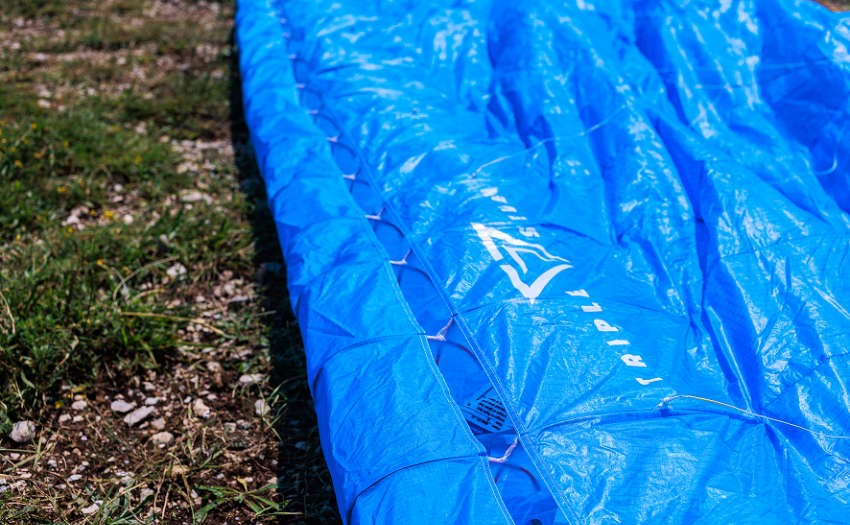
Another feature that Triple Seven use across their range is the Back Position Intake (BPI), which is their trade name for a sharknose. The aim is to improve energy retention when travelling through small bumps in the air and also increase the internal pressure at all angles of attack.
When brake is applied there is an increase in pressure towards the leading edge making the wing more solid and wing less collapse prone. The wing should also be less prone to surges and pitching back when entering climbs.
The 73 cells are reinforced by light plastic rods and immediately present a clean profile when the wing is waiting for launch. The construction feels light but robust and the rods are easy enough to pack.
The pack size is relatively compact for a glider with such a complex inner structure. It comes with a neatly designed concertina bag which eventually zips closed into a small cube-shaped design. An additional stuff bag is also supplied.
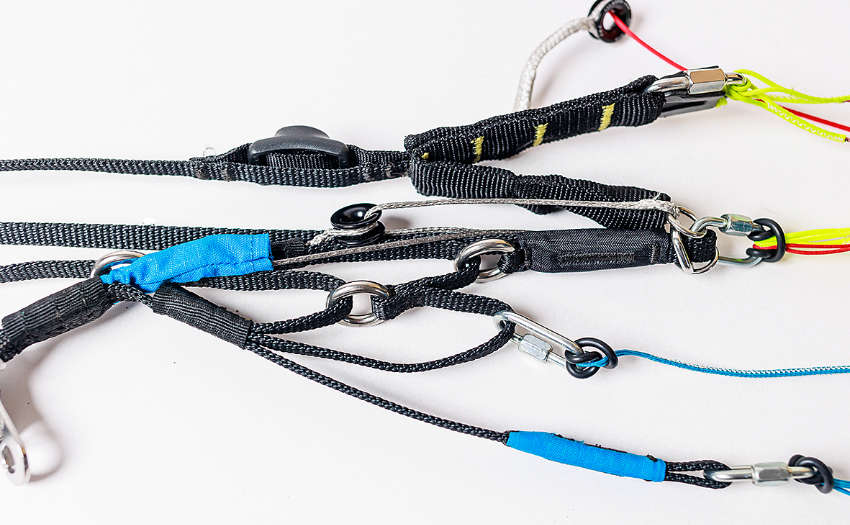
As I laid out I found the risers easy enough to set up despite not being familiar with the slightly complex looking pulley set-up designed to link the Cs and Bs during acceleration. There were no handles to get in the way during groundhandling, simply C-risers with obvious grab points and easy-to-locate colour-coded risers for launching. The brakes were held onto the risers with magnets but also had a small cup to stop them sliding off too easily.
Taking off
I was a little intimidated as I was a bit rusty and the wing looked like a high-end C or low D as I set up. I was worried that the light materials and AR would lead to quite snakey behaviour on launch. In fact I could not have found take-off much easier. Even in very light thermal breezes the wing inflated readily and sat patiently until it was time to go.
A gentle tug on the central As was enough to pull the wing up. There was a bit of an overshoot and the brakes were longer than I was anticipating but once I took a wrap the wing stayed obediently overhead. In stronger conditions I had to be ready to catch the wing but for a glider of the class it was nothing to worry about.
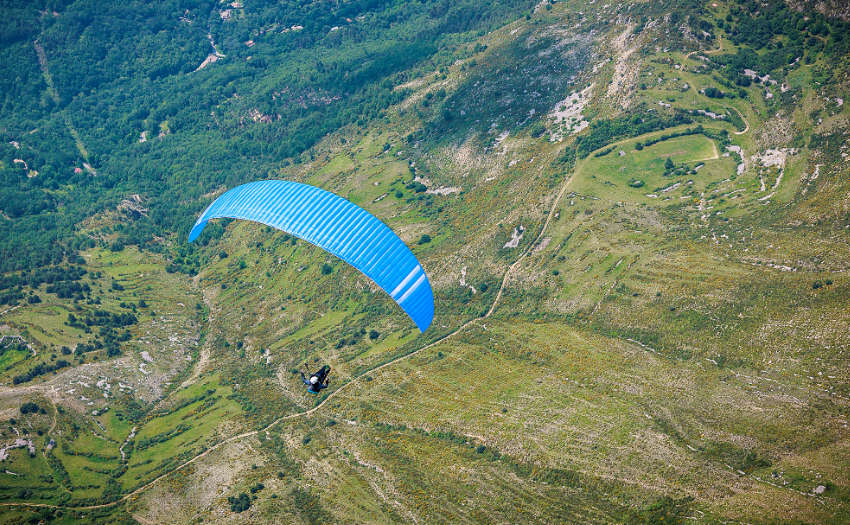
In the air
At first I was tentative as I looked to climb out. Once up and doing my first 360s the eagerness to turn was quite a surprise. For such a high AR the wing really does feel obedient and chuckable. I found myself changing bank angle or whipping around to change turn direction just because it was fun.
There was very little flex towards spin point and the wing gave me a lot of confidence, whether trying to fly slowly in weaker lift or trying to stand the wing on its wingtip to stay in a tiny spring thermal. Compared to my Sigma and similar wings the turn is probably a little more effort to manage but is also easier to tighten up when the time is right.
Looking at the wing in flight it looks incredible most of the time, although the underside does crease a little when turning. The trailing edge is optimised more for performance in the turn than to look clean and sleek. Triple Seven comment that some design effort on various models could go into making cells and profiles look cleaner. The downside of designing to look good is that the additional sewing and seams would decrease the efficiency of the design. So if you prefer the wing to look 100% clean in all flight modes you may be disappointed but if, like me, you like the feeling of the turn and the handling, I doubt you will care.
Flying along our classic out-and-return on the mountain ridge I experimented with half- and full-speed flying. I am not so experienced at flying two-liners but my teammates had explained the speed system and riser set-up. In some situations such as high-radius turns in scratchy conditions you can use the C-risers to thermal very flat. At speed the pulley system (B/C System) helps to optimise pressure and offers effective and safe rear-riser control.
The end result of this design witchcraft was that I, as a weekend warrior, felt very confident at speed. The wing felt very locked-in at speed but also communicated enough so I was able to fly through the lumps and bumps efficiently. At speed there was no tendency for the wingtips to surge or waggle around. Overall the wing felt well pressurised even in some of those horrible light and sinky moments found between strong thermals.
XC flying
Over the following weeks I flew the Q-Light 3 XC. These often started slow, with a lot of close terrain flying before climbing out. Then on transitions I needed a fair amount of glide to make it. To top it off I needed confidence to fly fast as I pushed home in a headwind.
The glider had enough precision close to the terrain to allow for slow scratching in the lighter conditions. The wing felt reassuringly stable on fast transitions and pushing into wind the pilot was giving up way before the wing was. Flying through gusts I was able to manage the wing using the C-risers and keep the bar buried at full speed.
The wing feels a cut above a mid-level C wing and is definitely a real cross-country weapon. It does demand some attention when on the edges of thermals and you need to remember it is a C, despite the general comfort and ease of use. There was enough comfort and pitch stability to allow me to fly around trying to take photos as we flew along. If I take a lot of photos on a flight I generally know I was happy and comfortable. However, on rougher days I realised I was damping out a few surges here and there.
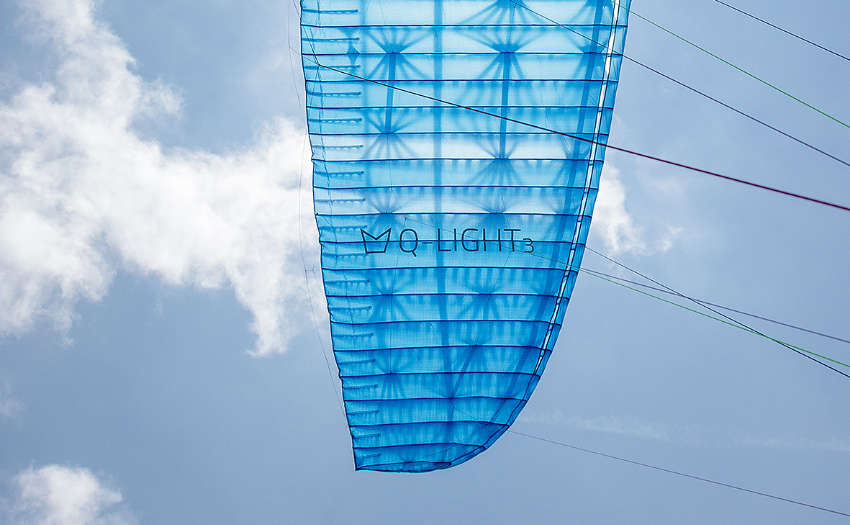
There appear to be none of the negatives you might expect flying a high-aspect wing made of lighter materials. No fluttering, no uncertainty pushing into rough air and no additional flexing in turns. It would be interesting to fly the Queen 3 in the standard cloth to compare side by side of course, but in general the wing just felt standard.
Getting down
On some of my early flights we were bouncing off the airspace and I had a lot of height to play with collapses and descent techniques. I pulled a few 50% collapses and found that while the wing did turn it inflated readily with a decent pump on the collapsed side. In real life I had one collapse over 50% as I ended up lee-side after falling out of a thermal. Maintaining direction was relatively easy but definitely required C-level reactions to avoid any further drama and to clear the collapse in the sinking turbulent air.
Small and big ears were easy to hold in and the collapsed areas sat still until they were needed again. There was no thrashing around and the main part of the wing remained stable and steerable. Spirals, especially if entered from a wingover, were an absolute blast. I am no acro pilot but I managed to get above the wing a few times without feeling I was in danger of having a sudden implosion in the leading edge.
Wingovers, for such an aspecty and racy wing are an absolute delight. On a few days where we didn’t have options to go XC, I really loved the playful nature of the wing. Then when high I could remember that this was a high-C and push into wind at speed.
Why go light?
Sometimes the light version of a C can be appealing on paper when thinking up those vol-bivouac adventures that we never seem to get around to. The downside is that some of the lighter and more compromised designs can be a disappointing handful in stronger air. This is definitely not the case with the Q-Light 3.
I haven’t yet flown the standard Queen 3 but as I packed the glider for the last time the only thing puzzling me was why a pilot would consider the Queen 3 versus this lighter sibling. Triple Seven say that for some markets, where take-offs are rough and UV is higher then lighter cloth can be a hard sell. Lighter cloth is also more expensive.
The increasing cost of wings definitely raises eyebrows so if pilots need to hold on to their EN-C for a few seasons they may want to look at the standard Queen. Pilots where take-offs are rocky and dusty may prefer the robustness of the heavier model.
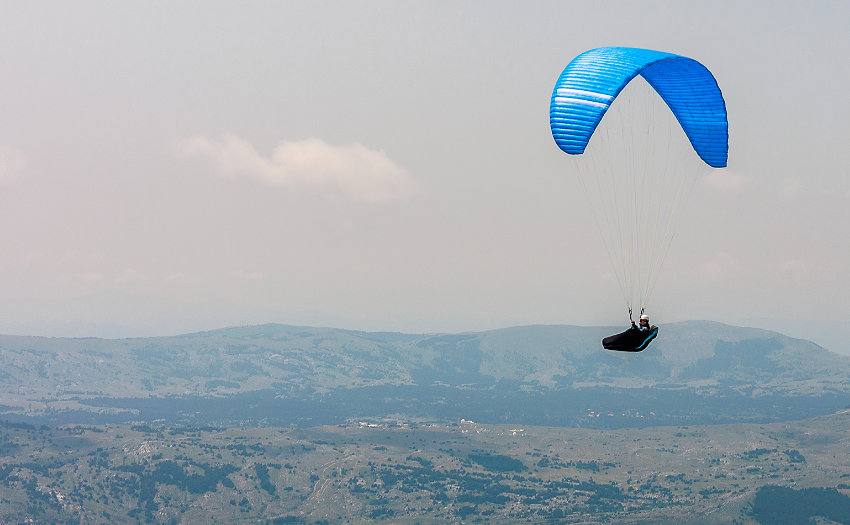
The verdict
Many manufacturers are producing two-line C wings. Triple Seven rejected the idea of moving to a two-line profile for this iteration of the Queen. The feeling is that the Queen 3 and Q-Light 3 can offer the best introduction to high-aspect wings for those trading up from lower-level wings.
The Q-Light 3 is a fantastic high-speed XC performance wing which is accessible to those used to high-end Bs or mid-Cs. EN-D pilots trading down will enjoy the speed and improved handling and sheer fun factor.
I’d hesitate to recommend the wing as a first C as the recovery characteristics needed a little more precision and responsiveness. For talented XC pilots it is an absolute first-class speed machine. For pilots trading down there is an increase in fun and handling over the more bleeding-edge classes.
I know that the EN-C two-line revolution is with us, but good three-liners such as Sigma 11s and the Queen 3 / Q-Light 3 do perform well against them. It is for this reason that for now, I will let the early-adopters have fun on their two-liners and enjoy wings like the Q-Light 3 while they last.
Manufacturer’s Specifications
777 say: “The Q-light 3 fulfils any demand of a high-achieving pilot. Pack it for your bivouac adventures, bring it up to your local hill and crunch XC kilometres.”
Pilot level: Sports class pilots and above
Sizes: S, MS, ML, L
Certified take-off weight (kg): 70-85, 80-95, 90-105, 100-119
Flat area (m²): 23.0, 24.3, 25.6, 27.4
Glider weight (kg): 3.7, 4.0, 4.2, 4.6
Cells: 73
Flat aspect ratio: 6.2
Certification: LTF/EN-C
Brian flew the Q-Light 3 (S) at 85kg all up, with an Advance Lightness 2 harness.
Published in issue 244 (October 2023)


